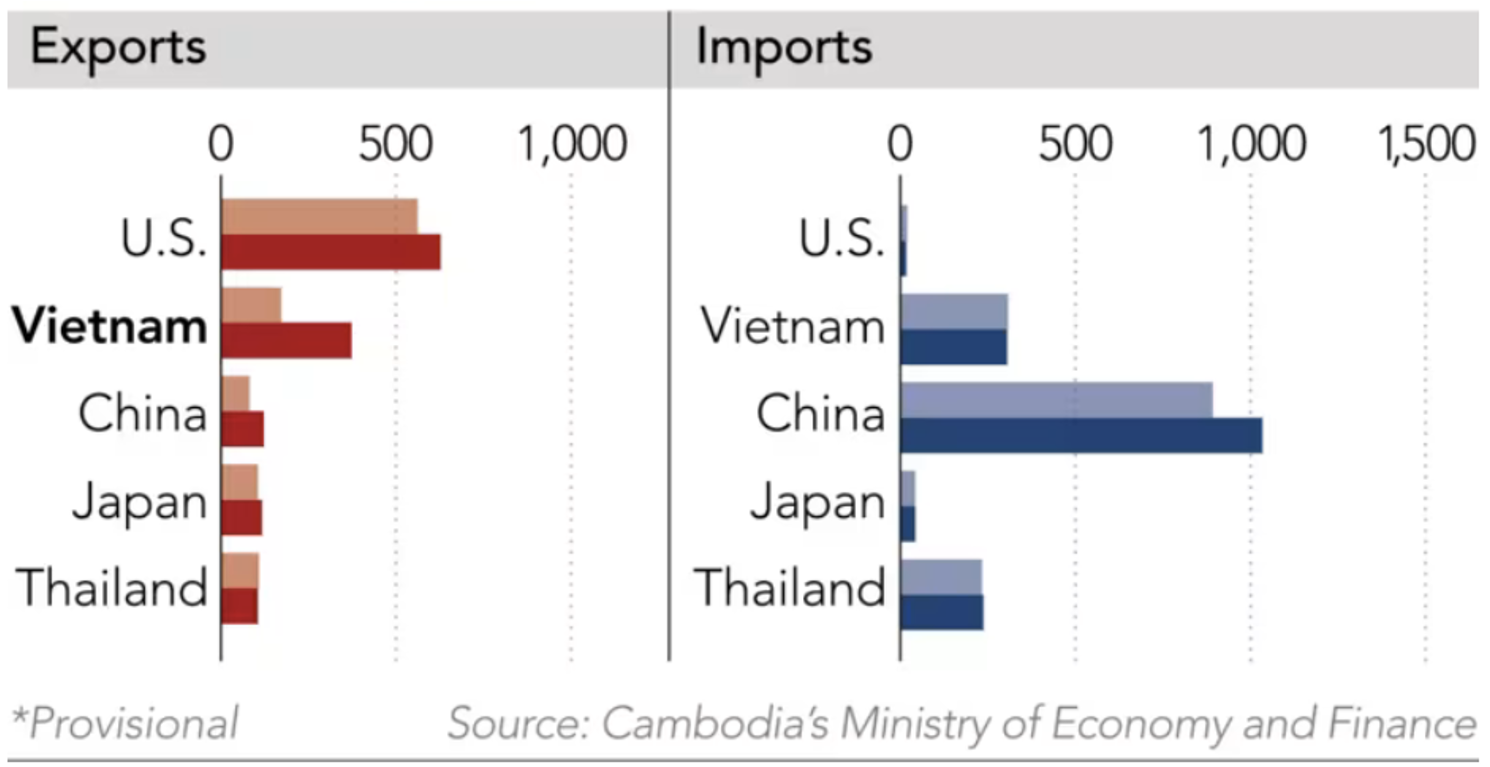According to initial information, the project's main goal is water transportation, including operating ship locks to maintain a stable water level for traffic. According to this scenario, Cambodia's report said that the water flow transferred from the Mekong River system is only about 3.6 m3/s, which is insignificant compared to the dry season flow to the Hau River (Vietnam) through Chau Doc.
According to preliminary calculations by the Southern Institute of Irrigation Sciences, the assumption is that about 50,000 hectares of agricultural land along the canal uses irrigation water with an average flow of 50m3/s, then the total amount of water transferred to the canal in the 6 months of the dry season is about 1.12 billion cubic meters of water, only about 2% compared to the total amount of water in the 6 months of the dry season in 2020 (the year of severe drought) flowing to the Mekong Delta (about 55 billion cubic meters).
The amount of water transferred from the Mekong River to the Bassac during this time is estimated at about 0.75 billion cubic meters, and thus the volume of water flowing to the Mekong Delta through Chau Doc will decrease by 0.37 billion cubic meters compared to the 2020 dry season, accounting for about 5%.
In the flood season, for operation of the transportation route, the project investor will limit the transfer of floods to the Gulf of Thailand through the canal. However, if the canal is freely opened, the amount of water with alluvium flowing in this direction is also insignificant. Thus, the total amount of water used for the Funan Techo canal is insignificant compared to the total amount of water of the main stream of the Mekong River to Vietnam.
However, during high tide weeks, when farmers in the Long Xuyen Quadrangle and Dong Thap Muoi (Vietnam) take water at the same time as Cambodian farmers take water for irrigation, then water-supply risks may occur in the Mekong Delta. The level of risk also depends on the readiness of downstream farmers.
Appropriate behavior
Building the Funan Techo canal project is a legitimate investment activity for the socio-economic development of Cambodia. Operating this system so as not to have a significant impact on the main stream of the Mekong River is the obligation of Cambodia, a member of the MRC.
Therefore, Vietnam and Cambodia need to cooperate sincerely to enhance the socio-economic development of both countries while ensuring the principles of cooperation between MRC member states. Technical experts from both sides should coordinate with the MRC Secretariat to clarify unwanted impacts that may occur in the future and together set risk mitigation solutions.
The Mekong Delta needs to promote sustainable development activities as determined by Resolution 120/NQ-CP as well as the strategic orientation in the Mekong Delta Regional Plan to 2030, with a vision to 2050, which emphasizes green agriculture.
The intricate system of canals in the Mekong Delta needs to be dredged to increase water supply, and drainage and water storage capacity. The current irrigation systems need to be consolidated and improved, and new irrigation systems should be built to control water at a sub-regional scale.
Vietnam and Cambodia can exchange and cooperate to reach agreement on water use schedules for agriculture (related to farming schedules) that do not overlap to minimize risks in water supply, especially during tidal weeks. Logistic services for export/import goods through Cai Mep or Cat Lai gateway need to be improved, with reasonable costs to retain Cambodian importers and exporters.
Dr. Trinh Cong Van - MeKong Water Technology Innovation Institute

